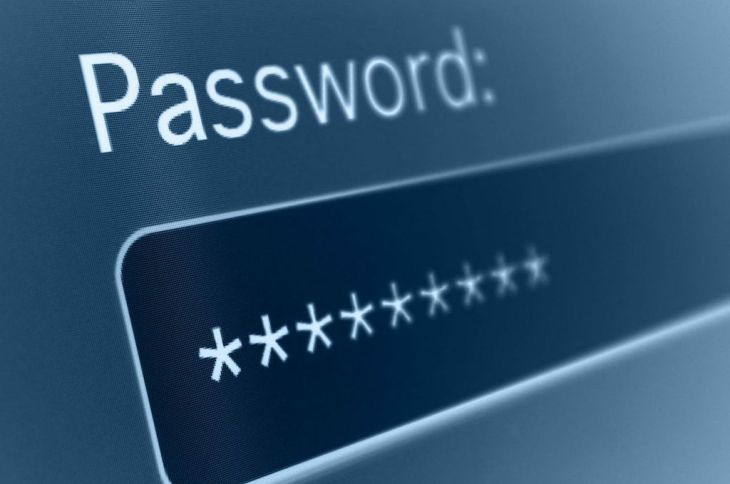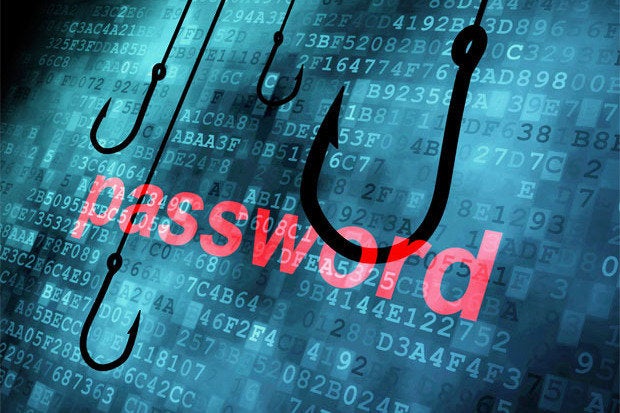Click the 'Security' tab in the 'Options' menu. Step 3 Click 'Saved Passwords' in your 'Options' menu, and click 'Show Passwords.' Click 'OK' on the warning box, and your passwords will be presented with their corresponding websites. Long passwords are good; long passwords that include random words and phrases are better. If your letter combinations are not in the dictionary, your phrases are not in published literature,.
Purpose
The purpose of this Guideline is to educate Carnegie Mellon University (“University”) students, faculty and staff on the characteristics of a Strong Password as well as to provide recommendations on how to securely maintain and manage passwords.
Applies To
This Guideline applies to all students, faculty and staff that have a username and password to at least one University system or application, independent of whether you are an end user or a system administrator for that system or application.
Definitions
A Strong Password is defined as a password that is reasonably difficult to guess in a short period of time either through human guessing or the use of specialized software.Guidelines
The following are general recommendations for creating a Strong Password:
A Strong Password should -- Be at least 8 characters in length
- Contain both upper and lowercase alphabetic characters (e.g. A-Z, a-z)
- Have at least one numerical character (e.g. 0-9)
- Have at least one special character (e.g. ~!@#$%^&*()_-+=)
- Spell a word or series of words that can be found in a standard dictionary
- Spell a word with a number added to the beginning and the end
- Be based on any personal information such as user id, family name, pet, birthday, etc.
The following are several recommendations for maintaining a Strong Password:
- Do not share your password with anyone for any reason
Passwords should not be shared with anyone, including any students, faculty or staff. In situations where someone requires access to another individual’s protected resources, delegation of permission options should be explored. For example, Microsoft Exchange calendar will allow a user to delegate control of his or her calendar to another user without sharing any passwords. This type of solution is encouraged. Passwords should not be shared even for the purpose of computer repair. An alternative to doing this is to create a new account with an appropriate level of access for the repair person.
- Change your password upon indication of compromise
If you suspect someone has compromised your account, change your password immediately. Be sure to change your password from a computer you do not typically use (e.g. university cluster computer). After resetting your password, report the incident to your local departmental administrator and/or the Information Security Office at iso-ir@andrew.cmu.edu.
- Consider using a passphrase instead of a password
A passphrase is a password made up of a sequence of words with numeric and/or symbolic characters inserted throughout. A passphrase could be a lyric from a song or a favorite quote. Passphrases typically have additional benefits such as being longer and easier to remember. For example, the passphrase “My passw0rd is $uper str0ng!” is 28 characters long and includes alphabetic, numeric and special characters. It is also relatively easy to remember. It is important to note the placement of numeric and symbolic characters in this example as they prevent multiple words from being found in a standard dictionary. The use of blank spaces also makes a password more difficult to guess.
- Do not write your password down or store it in an insecure manner
As a general rule, you should avoid writing down your password. In cases where it is necessary to write down a password, that password should be stored in a secure location and properly destroyed when no longer needed (see Guidelines for Data Protection). Using a password manager to store your passwords is not recommended unless the password manager leverages strong encryption and requires authentication prior to use. The ISO has vetted some password managers that meets these requirements.
- Avoid reusing a password
When changing an account password, you should avoid reusing a previous password. If a user account was previously compromised, either knowingly or unknowingly, reusing a password could allow that user account to, once again, become compromised. Similarly, if a password was shared for some reason, reusing that password could allow someone unauthorized access to your account.
- Avoid using the same password for multiple accounts
While using the same password for multiple accounts makes it easier to remember your passwords, it can also have a chain effect allowing an attacker to gain unauthorized access to multiple systems. This is particularly important when dealing with more sensitive accounts such as your Andrew account or your online banking account. These passwords should differ from the password you use for instant messaging, webmail and other web-based accounts.
- Do not use automatic logon functionality
Using automatic logon functionality negates much of the value of using a password. If a malicious user is able to gain physical access to a system that has automatic logon configured, he or she will be able to take control of the system and access potentially sensitive information.

The following are Guidelines for individuals responsible for provisioning and support of user accounts:
- Enforce strong passwords
Many systems and applications include functionality that prevents a user from setting a password that does not meet certain criteria. Functionality such as this should be leveraged to ensure only Strong Passwords are being set.
- Require a change of initial or “first-time” passwords
Forcing a user to change their initial password helps ensure that only that user knows his or her password. Depending on what process is being used to create and distribute the password to the user, this practice can also help mitigate the risk of the initial password being guessed or intercepted during transmission to the user. This guidance also applies to situations where a password must be manually reset.
- Force expiration of initial or “first-time” passwords
In certain situations, a user may be issued a new account and not access that account for a period of time. As mentioned previously, initial passwords have a higher risk of being guessed or intercepted depending on what process is being used to create and distribute passwords. Forcing an initial password to expire after a period of time (e.g. 72 hours) helps mitigate this risk. This may also be a sign that the account is not necessary.
- Do not use Restricted data for initial or “first-time” passwords
The Guidelines for Data Classification defines Restricted data in its data classification scheme. Restricted data includes, but is not limited to, social security number, name, date of birth, etc. This type of data should not be used wholly or in part to formulate an initial password. See Appendix A for a more comprehensive list of data types.
- Always verify a user’s identity before resetting a password
A user’s identity should always be validated prior to resetting a password. If the request is in-person, photo identification is a sufficient means of doing this. If the request is by phone, validating an identity is much more difficult. One method of doing this is to request a video conference with the user (e.g. Skype) to match the individual with their photo id. However, this can be a cumbersome process. Another option is to have the person’s manager call and confirm the request. For obvious reasons, this would not work for student requests. If available, a self-service password reset solution that prompts a user with a series of customized questions is an effective approach to addressing password resets.
- Never ask for a user’s password
As stated above, individual user account passwords should not be shared or any reason. A natural correlation to this guidance is to never ask others for their passwords. Once again, delegation of permission is one alternative to asking a user for their password. Some applications include functionality that allows an administrator to impersonate another user, without entering that user’s password, while still tying actions back to the administrator’s user account. This is also an acceptable alternative. In computer repair situations, requesting that a user create a temporarily account on their system is one alternative.
The following are several additional Guidelines for individuals responsible for the design and implementation of systems and applications:
- Change default account passwords
Default accounts are often the source of unauthorized access by a malicious user. When possible, they should be disabled completely. If the account cannot be disabled, the default passwords should be changed immediately upon installation and configuration of the system or application.
- Implement strict controls for system-level and shared service account passwords
Shared service accounts typically provide an elevated level of access to a system. System-level accounts, such as root and Administrator, provide complete control over a system. This makes these types of accounts highly susceptible to malicious activity. As a result, a more lengthy and complex password should be implemented. System-level and shared service accounts are typically critical to the operation of a system or application. Because of this, these passwords are often known by more than one administrator. Passwords should be changed anytime someone with knowledge of the password changes job responsibilities or terminates employment. Use of accounts such as root and Administrator should also be limited as much as possible. Alternatives should be explored such as using sudo in place of root and creating unique accounts for Windows administration instead of using default accounts.
- Do not use the same password for multiple administrator accounts
Using the same password for multiple accounts can simplify administration of systems and applications. However, this practice can also have a chain effect allowing an attacker to break into multiple systems as a result of compromising a single account password.
- Do not allow passwords to be transmitted in plain-text
Passwords transmitted in plain-text can be easily intercepted by someone with malicious intent. Protocols such as FTP, HTTP, SMTP and Telnet all natively transmit data (including your password) in plain-text. Secure alternatives include transmitting passwords via an encrypted tunnel (e.g. IPSec, SSH or SSL), using a one-way hash or implementing a ticket based authentication scheme such as Kerberos. Contact the Information Security Office at iso@andrew.cmu.edu if you would like an assessment of your application’s authentication controls.
- Do not store passwords in easily reversible form
Passwords should not be stored or transmitted using weak encryption or hashing algorithms. For example, the DES encryption algorithm and the MD-4 hash algorithm both have known security weaknesses that could allow protected data to be deciphered. Encryption algorithms such as 3DES or AES and hashing algorithms such as SHA-1 or SHA-256 are stronger alternatives to the previously mentioned algorithms. Contact the Information Security Office at iso@andrew.cmu.edu if you have questions related to the use of a specific encryption and hashing algorithm.
- Implement automated notification of a password change or reset
When a password is changed or reset, an email should be automatically sent to the owner of that user account. This provides a user with a confirmation that the change or reset was successful and also alerts a user if his or her password to unknowingly changed or reset.
Additional Information
If you have any questions or comments related to this Guideline, please send email to the University Information Security Office at iso@andrew.cmu.edu.
Additional information can also be found using the following resources:
- University Computing Policy
http://www.cmu.edu/policies/documents/Computing.htm
- Guidelines for Data Classification
http://www.cmu.edu/iso/governance/guidelines/data-classification.html
- Guidelines for Data Protection
http://www.cmu.edu/iso/governance/guidelines/data-protection/index.html
- Managing Your Password
http://www.cmu.edu/computing/services/security/identity-access/account/password.html
Revision History
| Version | Date Published | Author | Description |
| 1.0 | 12/01/2007 | Doug Markiewicz | Original publication. Replaces Password Strength Guidelines and Password Sharing Guidelines. |
| 1.1 | 05/14/2008 | Doug Markiewicz | Updated broken link in Additional Information. |
| 1.2 | 09/12/2012 | Doug Markiewicz | Updated out of date references to supplemental resources. |
| 1.3 | 03/24/2014 | Wiam Younes | Updated information on password compromise procedure and the example to verify user's identity. |
| 1.4 | 09/14/2017 | Laura Raderman | Updated links to new Computing Services' site and formatted for new CMS templates |
Passwordstate
| Status | Date Published |
| Published: | 12/01/2007 |
| Last Updated: | 09/14/2017 |
| Last Reviewed: | 09/14/2017 |
One of the most important ways to ensure that your online interactions are safe and secure is to protect your passwords. The good news is that protecting your passwords is in your control—you just need to create strong passwords and then keep them secret. Follow this advice to help keep your passwords out of the wrong hands.

Create strong passwords
Password security starts with creating a strong password. A strong password is:
At least 12 characters long but 14 or more is better
A combination of uppercase letters, lowercase letters, numbers, and symbols
Not a word that can be found in a dictionary
Not the name of a person or a popular entity such as a character, product, or organization
Significantly different from your previous passwords
Easy for you to remember but difficult for others to guess
Consider using a memorable phrase like '6MonkeysLooking^'

Secure your passwords
Once you’ve created a strong password, you should follow these guidelines to keep it secure:
Don’t share a password with anyone. Not even a friend or family member.
Never send a password by email, instant message, or any other means of communication that is not reliably secure.
Use a unique password for each website. If someone steals a password that you use on multiple websites, all the information that password protects on all of those sites is at risk.
If you don’t want to memorize multiple passwords, consider using a password manager. The best password managers will automatically update stored passwords, keep them encrypted, and require multi-factor authentication for access.
Don’t store a password on the device it’s designed to protect.
It's ok to write your passwords down, as long as you keep them secure. Don't write them on sticky notes or cards that you keep near the thing the password protects, even if you think they're well-hidden they could be discovered.
Or just a hint...
Rather than writing down your password, consider writing down a hint that reminds you of what the password is. So if your password is 'Paris4SpringVacation!' you could write down 'Your favorite trip.'
Whenever possible, change passwords immediately on accounts you suspect may have been compromised, or even if you just think the password has been compromised.
Avoid entering your password on any device if you’re unsure whether that device is secure. Devices that are shared or available for public use might have keylogging software installed that could capture your password as you type it. You should also avoid allowing your password to be saved on shared or public computers.
Enable multi-factor authentication (MFA) whenever available. MFA is a method of access control that requires more than one credential for verification—such as requiring both a password and a pin. This adds another layer of security in case someone guesses or steals your password. For more information see What is: Multi-factor authentication.
Tip: If you’re asked to create answers to security questions, provide an unrelated answer. For example, if the question is 'Where were you born?' you might answer 'Green.' Answers like these can’t be found by trolling Twitter or Facebook. (Just be sure they make sense to you, so you'll remember them.)
Don’t be tricked into revealing your passwords
Criminals can try to break your password, but sometimes it’s easier to exploit human nature and trick you into revealing it.
You might receive an email message pretending to be from an online store (like eBay or Amazon) or a phone call from your “bank” that tries to convince you of the “legitimate” need for your password or other sensitive information. It could be a phishing scam. (You may have heard these con games referred to as social engineering.)
Here are some guidelines to follow to protect your passwords and other sensitive information:
Passwords And Accounts
In general, be wary of anyone who is requesting sensitive information from you, even if it appears to be someone you know or a company you trust. For example, a crook may have hijacked a friend’s account and sent email to everyone in the friend’s address book. Treat all unsolicited requests for sensitive information with caution.
Never share your password in response to an email or phone request—for example, to verify your identity—even if it appears to be from a trusted company or person.
Always access websites using trusted links. Scammers can copy the look of a company’s communications to fool you into clicking a phony link or attachment, so use caution with links that appear in unsolicited emails, instant messages, or SMS messages. If in doubt, go directly to the official website of the bank or other service you’re trying to access via your own bookmark or by typing the legitimate address of the service in yourself.
